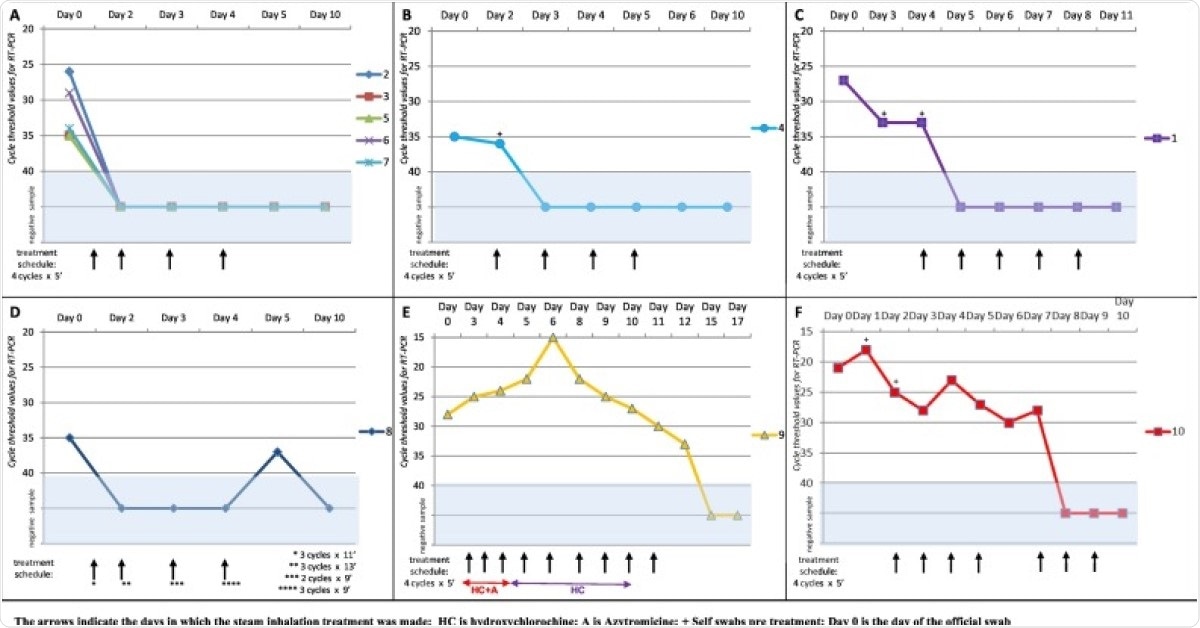Over 61.49 million people worldwide have been infected with severe acute respiratory syndrome coronavirus 2 (SARS-CoV-2) – the agent that causes coronavirus disease 2019 (COVID-19) – and over 1.44 million people have lost their lives. At present, there are no safe and effective antivirals to treat infection. Non-pharmaceutical interventions (NPIs) thus remain the order of the day, and these typically include wearing masks in public, social distancing and regular handwashing.
Nearly a year on from when the virus was first detected, Italian researchers at the Biochemistry and Pharmacology Laboratory, Meyer Children's University Hospital, Florence, Italy, have published a study on the efficacy of steam inhalations as another possible treatment to help mitigate SARS-CoV-2 infection. Their study was published in the latest issue of the journal Life Sciences.
Background and objectives of the study
The World Health Organization (WHO) declared the global spread of COVID-19 a pandemic on March 11, 2020. It has been one of the largest public health problems in recent memory. It has overwhelmed healthcare systems in many parts of the world, and its knock-on effects have crippled the global economy. The authors of the study write that before the availability of effective vaccines to prevent infection, or antivirals to treat it, upholding NPIs remain crucial.
The virus and the way it infects
SARS-CoV-2 is an RNA virus with a capsid and a peri-capsid envelope, which is crossed by glycoprotein structures. The virus has an external protein structure – namely, its spike proteins – that can bind onto human cells to facilitate viral entry. Most therapeutic agents being developed are being targeted towards these proteins and the process by which they allow the virus to infiltrate the host cell.
Temperature
Early on in the virus's outbreak, it was found that soapy water could help break down the viral envelope and thus denature it. Researchers added that heat has also been seen to denature the proteins that lead to loss of infectivity of the SARS-CoV that caused the 2002 SARS outbreak. The researchers have shown that heat can also denature the SARS-CoV-2 virion's proteins.
Temperatures of 56 °C for 15 and 30 minutes in liquid environments, respectively, were enough to breakdown SARS-CoV and SARS-CoV-2, the researchers wrote.
Steam inhalation
Steam inhalation cycles are thus considered to be useful in damaging the capsid of the SARS-CoV-2 envelope and prevent infection, write the researchers. They write that the European Pharmacopoeia VI edition has recommended steam inhalations as a procedure to treat respiratory diseases.
Study design
This was a small single-center study, including 10 asymptomatic or paucisymptomatic healthcare professionals (including physicians and pediatric nurses). Paucisymptomatic individuals were those with mild symptoms. All 10 individuals had tested positive for the SARS-CoV-2 via real-time polymerase chain reaction reverse transcription (RT-PCR) tests.
The patients were administered humidified steam through inhalation for at least 20 minutes (5 cycles of 4 minutes) within 1 hour for at least 4 consecutive days. Their airway mucosal membranes were exposed to the steam. The temperature of the steam was maintained at 55 and 65 °C in the first 4 to 5 min after the initiation of water boiling. The patient had a towel draped over his over her back, lowering toward the hot steam down to about 25 to 30 cm from the water.
At 24 hours after each cycle of treatment, viral shedding was measured by RT-PCR after collecting swabs from the nose and pharynx (rhino pharyngeal swabs). Viral load was measured using at least 6 Cycle Threshold Values.
3 participants dropped out of the intervention; 1 due to allergy, 1 started on hydroxychloroquine and azithromycin treatment since day 1, and 1 manifested more than three symptoms, which were moderate to severe.
The average age of the participants was 44.4 years.
Findings
Overall results were as follows:
- 6 patients with symptoms reported clinical improvement at the end of the intervention
- 2 patients showed persistent symptoms of loss of smell and taste
- 1 patient complained of persisting muscle pain and nasal congestion
- All 7 patients tested negative after the first day of steam inhalation on four consecutive swab samples.
- All 7 remained low viral shedders 3 to 5 days after following the protocol
- The allergic patient who had stopped the study on day 5 had showed a negative swab on inhalation on day 1. They showed a weak positive 3 days later. An additional swab on day 10 showed negative
- The patient that had also started on hydroxychloroquine and azithromycin (for 9 days and 3 days, respectively) continued the steam inhalation till day 5 when their swab tested negative
- The third dropped out patient with moderate to severe symptoms continued the steam inhalation protocol tested negative on swabs on days 8, 9 and 10.

Viral shedding diagram from patients 2, 3, 5, 6 and 7. All five patients performed the protocol (4 cycles/5 min each) on days 1, 2, 3 and 4 measuring the effect of treatment on days 2, 3, 4 and 5. A new swab on day 10 confirmed short term negativity.
Conclusions and implications
This study, although a small one, shows the beneficial effects of steam inhalation in reducing viral shedding from infected patients. The team writes that this could be an "easily accessible, non-invasive and inexpensive procedure" which has been proven to be effective. It should be subjected to larger clinical trials, the team wrote.
They concluded, "Should our preliminary observations be confirmed, the protocol could be used against COVID19 or other viral infections using vapotherm masks, where temperature, time of exposure and size of steam particles can be set and monitored."